2026届高考英语二轮复习:词类课件(共60张PPT)
文档属性
| 名称 | 2026届高考英语二轮复习:词类课件(共60张PPT) | 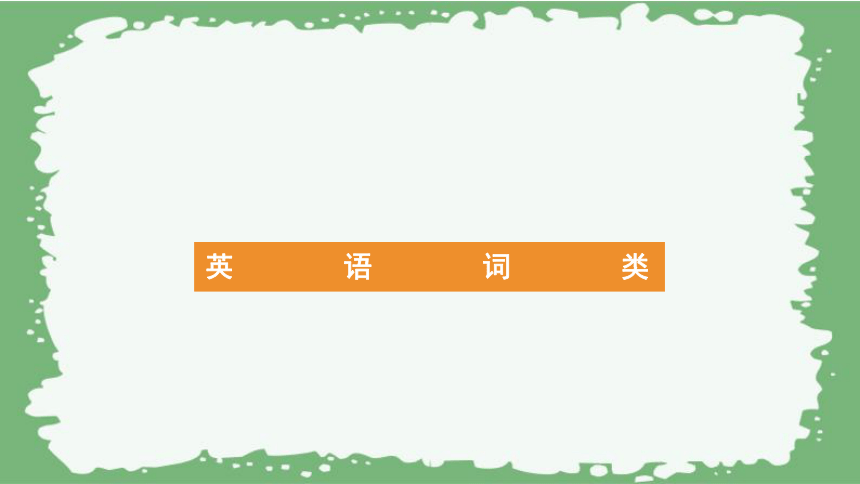 | |
| 格式 | pptx | ||
| 文件大小 | 497.1KB | ||
| 资源类型 | 教案 | ||
| 版本资源 | 通用版 | ||
| 科目 | 英语 | ||
| 更新时间 | 2025-07-28 12:20:48 | ||
图片预览

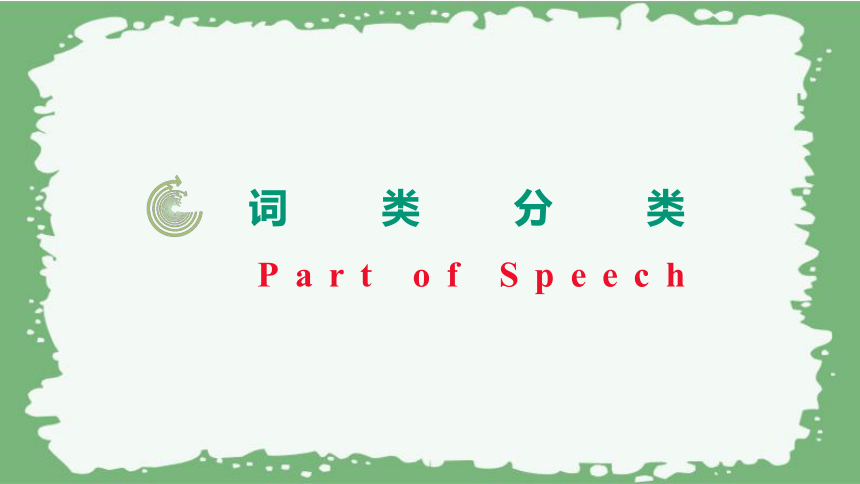
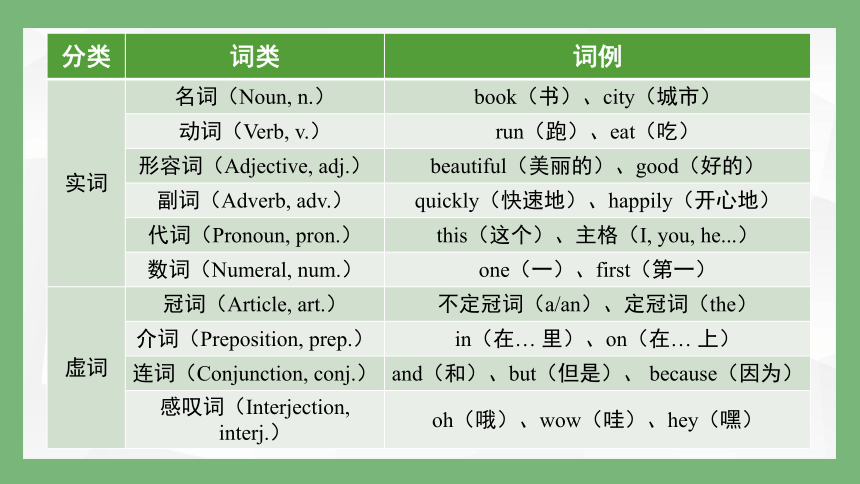
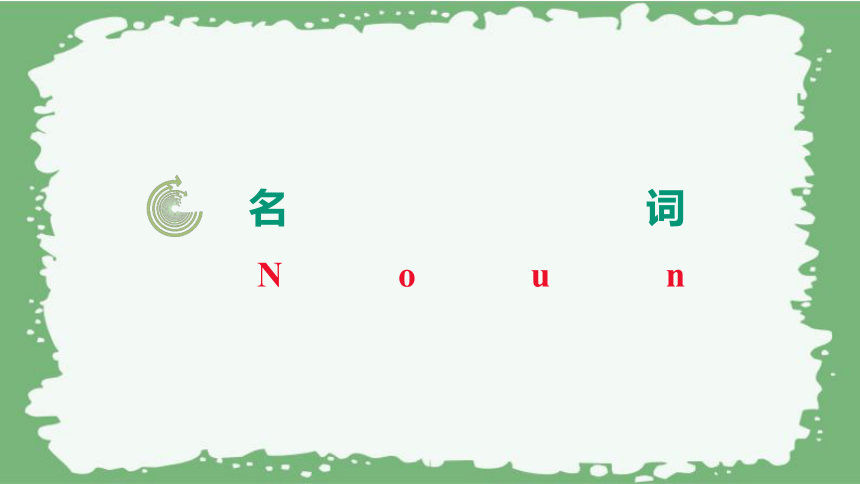
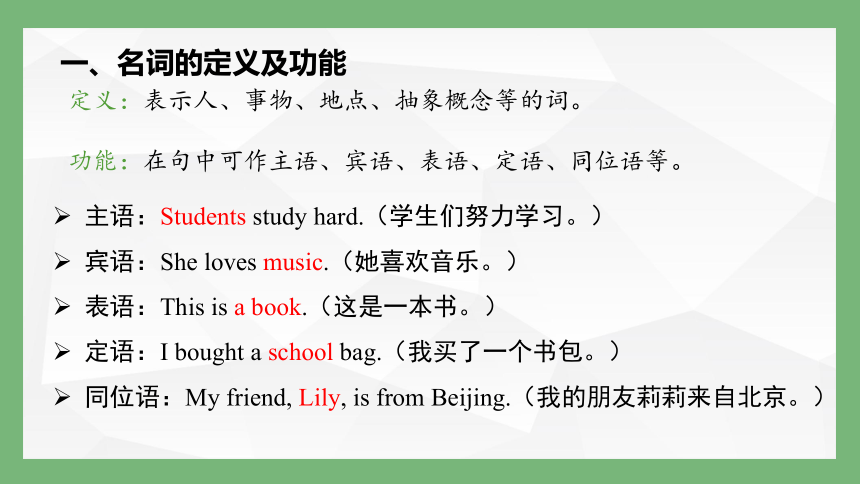
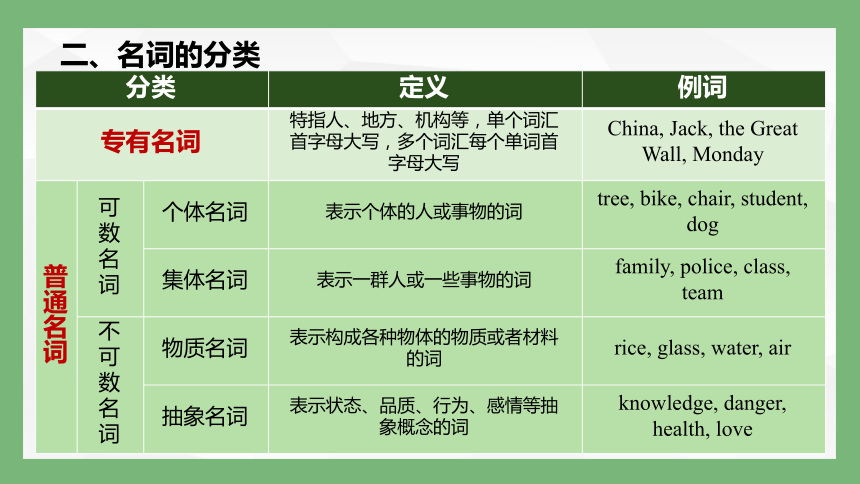
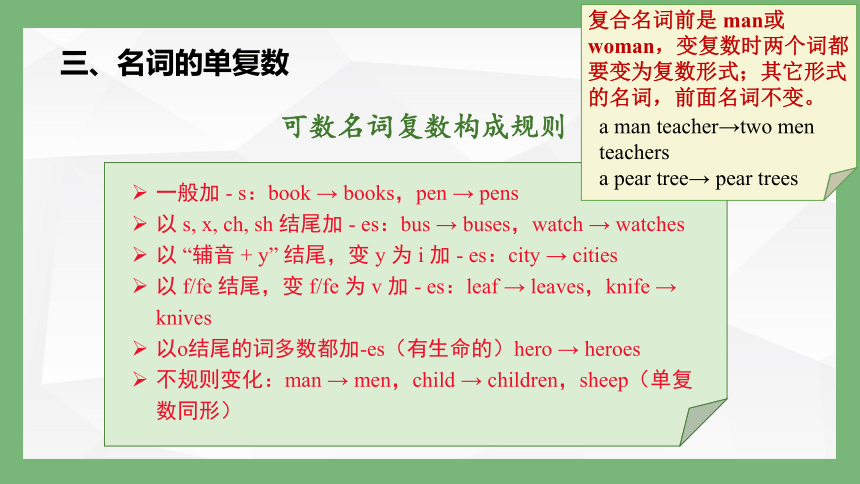
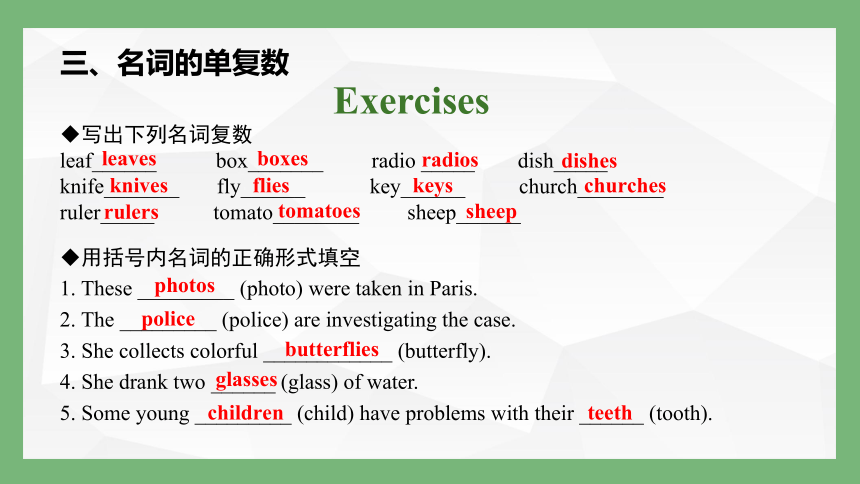
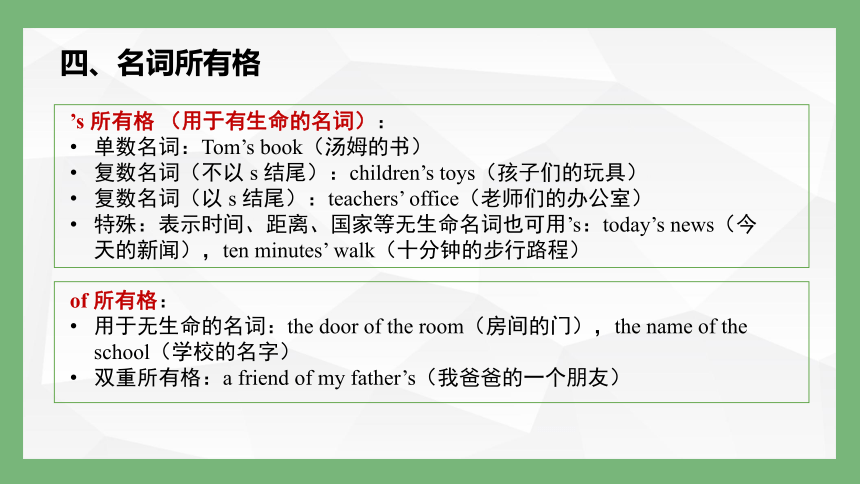
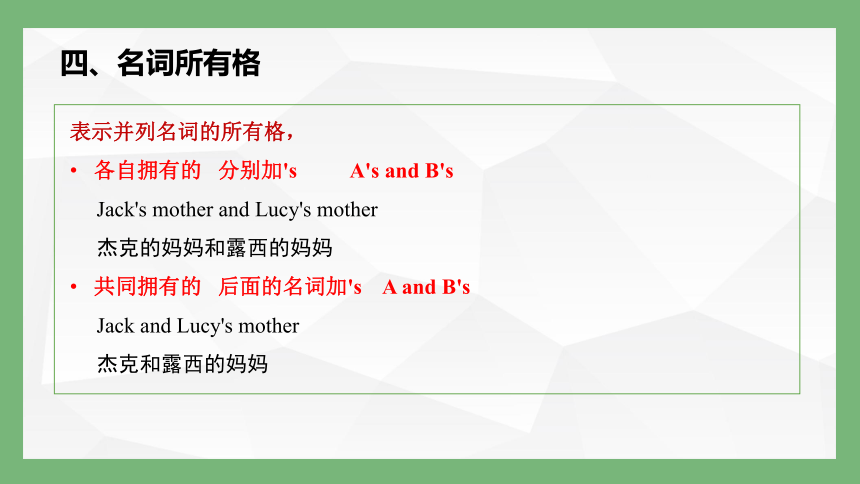
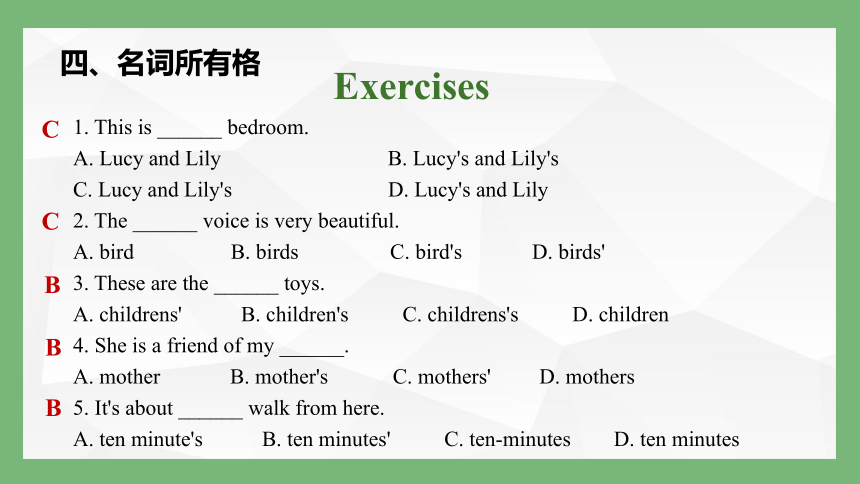
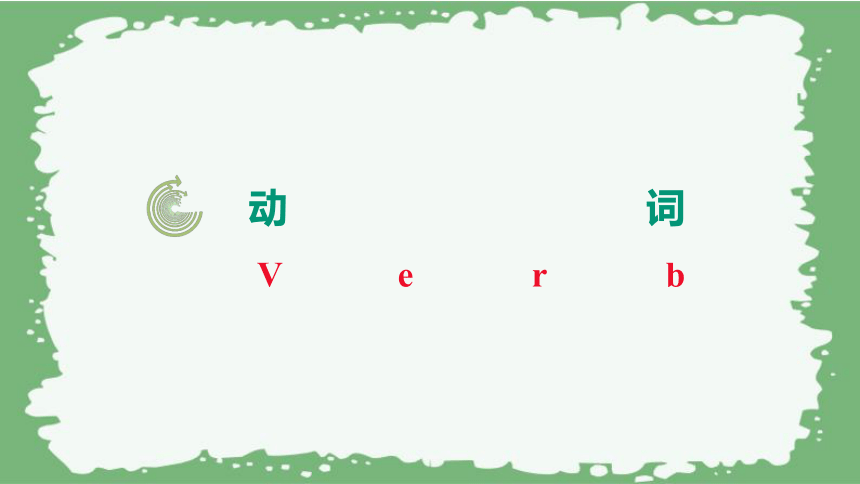
文档简介
(共60张PPT)
英语词类
词类分类
Part of Speech
分类 词类 词例
实词 名词(Noun, n.) book(书)、city(城市)
动词(Verb, v.) run(跑)、eat(吃)
形容词(Adjective, adj.) beautiful(美丽的)、good(好的)
副词(Adverb, adv.) quickly(快速地)、happily(开心地)
代词(Pronoun, pron.) this(这个)、主格(I, you, he...)
数词(Numeral, num.) one(一)、first(第一)
虚词 冠词(Article, art.) 不定冠词(a/an)、定冠词(the)
介词(Preposition, prep.) in(在… 里)、on(在… 上)
连词(Conjunction, conj.) and(和)、but(但是)、 because(因为)
感叹词(Interjection, interj.) oh(哦)、wow(哇)、hey(嘿)
名词
Noun
一、名词的定义及功能
定义:表示人、事物、地点、抽象概念等的词。
功能:在句中可作主语、宾语、表语、定语、同位语等。
主语:Students study hard.(学生们努力学习。)
宾语:She loves music.(她喜欢音乐。)
表语:This is a book.(这是一本书。)
定语:I bought a school bag.(我买了一个书包。)
同位语:My friend, Lily, is from Beijing.(我的朋友莉莉来自北京。)
二、名词的分类
分类 定义 例词
专有名词 特指人、地方、机构等,单个词汇首字母大写,多个词汇每个单词首字母大写 China, Jack, the Great Wall, Monday
普通名词 可数名词 个体名词 表示个体的人或事物的词 tree, bike, chair, student, dog
集体名词 表示一群人或一些事物的词 family, police, class, team
不可数名词 物质名词 表示构成各种物体的物质或者材料的词 rice, glass, water, air
抽象名词 表示状态、品质、行为、感情等抽象概念的词 knowledge, danger, health, love
三、名词的单复数
可数名词复数构成规则
一般加 - s:book → books,pen → pens
以 s, x, ch, sh 结尾加 - es:bus → buses,watch → watches
以 “辅音 + y” 结尾,变 y 为 i 加 - es:city → cities
以 f/fe 结尾,变 f/fe 为 v 加 - es:leaf → leaves,knife → knives
以o结尾的词多数都加-es(有生命的)hero → heroes
不规则变化:man → men,child → children,sheep(单复数同形)
复合名词前是 man或woman,变复数时两个词都要变为复数形式;其它形式的名词,前面名词不变。
a man teacher→two men teachers
a pear tree→ pear trees
三、名词的单复数
Exercises
写出下列名词复数
leaf______ box_______ radio _____ dish_____
knife_______ fly______ key______ church________ ruler_____ tomato________ sheep______
leaves
knives
flies
churches
dishes
rulers
sheep
keys
radios
boxes
tomatoes
用括号内名词的正确形式填空
1. These _________ (photo) were taken in Paris.
2. The _________ (police) are investigating the case.
3. She collects colorful ____________ (butterfly).
4. She drank two ______ (glass) of water.
5. Some young _________ (child) have problems with their ______ (tooth).
photos
police
butterflies
glasses
children
teeth
四、名词所有格
’s 所有格 (用于有生命的名词):
单数名词:Tom’s book(汤姆的书)
复数名词(不以 s 结尾):children’s toys(孩子们的玩具)
复数名词(以 s 结尾):teachers’ office(老师们的办公室)
特殊:表示时间、距离、国家等无生命名词也可用’s:today’s news(今天的新闻),ten minutes’ walk(十分钟的步行路程)
of 所有格:
用于无生命的名词:the door of the room(房间的门),the name of the school(学校的名字)
双重所有格:a friend of my father’s(我爸爸的一个朋友)
四、名词所有格
表示并列名词的所有格,
各自拥有的 分别加's A's and B's
Jack's mother and Lucy's mother
杰克的妈妈和露西的妈妈
共同拥有的 后面的名词加's A and B's
Jack and Lucy's mother
杰克和露西的妈妈
四、名词所有格
Exercises
1. This is ______ bedroom.
A. Lucy and Lily B. Lucy's and Lily's
C. Lucy and Lily's D. Lucy's and Lily
2. The ______ voice is very beautiful.
A. bird B. birds C. bird's D. birds'
3. These are the ______ toys.
A. childrens' B. children's C. childrens's D. children
4. She is a friend of my ______.
A. mother B. mother's C. mothers' D. mothers
5. It's about ______ walk from here.
A. ten minute's B. ten minutes' C. ten-minutes D. ten minutes
C
C
B
B
B
动词
Verb
一、动词的定义
定义:动词是表示动作、状态或存在的词,是句子的核心成分,能够说明主语 “做什么”“是什么” 或 “怎么样”。在英语句子中,动词通常用于描述主语的行为、变化、情感、状态等,没有动词,句子就无法完整地表达意思。
e.g. The boy runs fast.
The boy is a student.
二、动词的分类
(一)实义动词(Notional Verb)
实义动词是具有实际意义的动词,能够独立作谓语,表达具体的动作或状态。实义动词又可分为及物动词和不及物动词。
及物动词(Transitive Verb):后面必须跟宾语才能使句子意思完整。
例词:love(爱)、eat(吃)、teach(教)、buy(买)、read(读)
例句:She loves her parents deeply.
I eat an apple every day.
不及物动词(Intransitive Verb):后面不直接跟宾语,句子意思就能完整。如果需要接宾语,必须在动词后加介词。
例词:run(跑)、sleep(睡觉)、arrive(到达)、laugh(笑)
例句:They run fast on the playground.
We sleep eight hours every night.
二、动词的分类
(二)系动词(Linking Verb)
系动词本身有一定的词义,但不能独立作谓语,必须和表语一起构成谓语,说明主语的性质、特征、状态等。
五感
五变
三保持
二表象
一是
look, sound, smell, taste, feel
grow,get, go, become, turn
keep,remain,stay
seem ,appear
be
二、动词的分类
(三)助动词(Auxiliary Verb)
助动词本身没有实际意义,不能独立作谓语,只能和实义动词一起构成谓语,帮助构成时态、语态、疑问句、否定句等。常见的助动词有 be、do、does、did、have、has、had、will、would、shall、should 等。
功能 助动词 例句
帮助构成时态 be, have, has, will I am reading a book now.(现在进行时)
She has finished her homework.(现在完成时)They will go to Beijing tomorrow.(一般将来时)
帮助构成语态 be The book is written by him.(被动语态)
The letters were sent yesterday.(被动语态)
帮助构成疑问句和否定句 do, does, did Do you like English (一般疑问句)
He doesn't go to school on weekends.(否定句)Did she go to the park yesterday (一般过去疑)
二、动词的分类
(四)情态动词(Modal Verb)
情态动词表示说话人的语气、情态,如能力、许可、请求、推测、义务等。情态动词本身有一定的词义,但不能独立作谓语,必须和动词原形一起构成谓语。情态动词没有人称和数的变化(除了 have to 有人称和数的变化)。
情态动词 能力类 can, could She can speak French.
许可类 may, can, could May I leave early
义务类 must, should mustn't(禁止)You must wear a seatbelt.
推测类 must, can’t, might That can't be true!
三、动词的基本形式
动词有五种基本形式,分别是动词原形、第三人称单数形式、过去式、过去分词和现在分词。
1. 一般情况下,直接在动词词尾+s
get→gets; take→takes
(一)第三人称单数的动词变化规则
2. 以 sh, ch,o,s,x, 结尾的动词,在词尾+ es
teach→ teaches; fix→fixes; go→goes
3. 以辅音字母+ y 结尾的动词,变y 为i,再+ es
study→ studies; try→tries
4.特殊变化 have---has be-----is do-----does
三、动词的基本形式
1. 一般情况下,直接在动词后加-ed
work --- worked---worked ask---asked---asked
(二)过去式和过去分词的构成方法
2. 动词以e结尾,直接加d
like --- liked---liked live --- lived---lived
3. 以辅元辅结尾的,要双写末尾字母,再加ed
stop---stopped---stopped prefer---preferred---preferred
4.以辅音字母+ y 结尾的动词,变y 为i,再+ ed
carry---carried---carried
5.特殊 control---controlled travel---travel(l)ed
三、动词的基本形式
1. 一般情况下,直接在动词后加-ing
work --- working sleep --- sleeping
(三)现在分词的构成方法
2. 动词以不发音的e结尾,要去e加ing
make --- making dance --- dancing
3. 以辅元辅结尾的,要双写末尾字母,再加ing
cut --- cutting put ---putting
4. 以-ie结尾的动词变ie为y再加ing
lie ---lying tie --- tying
5.特殊 control---controlling travel---travel(l)ing
Exercises
一、单项选择题
1. My brother ______ football every weekend.
A. play B. plays C. played D. is playing
2. She ______ to Beijing last year.
A. go B. goes C. went D. will go
3. The cake ______ delicious. I want another piece.
A. looks B. sounds C. tastes D. smells
4. You ______ follow the traffic rules when crossing the road.
A. can B. may C. must D. would
5. They ______ TV at 8 o'clock last night.
A. watch B. watched C. are watching D. were watching
B
C
C
C
D
形容词
Adjective
一、形容词的定义与基本功能
定义:形容词(Adjective)是用于修饰名词或代词的词类,主要功能是描绘人或事物的特征、性质、状态。在句子中,形容词能让描述更生动具体,是初升高阶段英语语法的基础核心内容。
基本功能示例:
This is a beautiful flower.(修饰名词 flower)
The story sounds interesting.(说明主语 story 的特征)
I have something important to tell you.(修饰不定代词 something)
二、形容词在句中的位置
(一)前置修饰
大多数形容词放在被修饰的名词前:
a red apple(红色的苹果) two big trees(两棵大树)
(二)后置修饰
修饰不定代词(something/anything/nothing 等)时后置:
I have something important to do.
以 a - 开头的表语形容词作定语时后置:
the people alive(活着的人)
复合形容词修饰名词时后置(多含数量词):
a bridge 100 meters long(一座 100 米长的桥)
(三)表语位置
放在系动词(be/look/sound/feel 等)后:
The music sounds wonderful.
She looks happy today.
副词
Adverb
一、副词的定义与基本功能
定义:副词(Adverb)是用于修饰动词、形容词、其他副词或整个句子的词类,主要功能是说明动作的方式、时间、地点、程度、频率等。在句子中,副词能让表达更精准生动。
基本功能示例:
She runs fast.(修饰动词 runs)
He is very tall.(修饰形容词 tall)
She speaks quite fluently.(修饰副词 fluently)
Fortunately, he passed the exam.(修饰整个句子)
副词形式:
本身为副词 very, there, hard
形容词+-ly slowly, clearly, bravely
二、副词在句中的位置
一般放在动词之后。
She sings well.
频度副词通常放在实义动词之前,be 动词、助动词、情态动词之后。
She often goes to the library.(实义动词前)
He is always late for class.(be 动词后)
You should never tell lies.(情态动词后)
放在被修饰的形容词或副词之前。
This book is very interesting.(修饰形容词 interesting)
He runs much faster than me.(修饰副词 faster)
修饰整个句子 时通常放在句首或句尾。
Luckily, we won the game.(句首)
It rained heavily, though.(句尾)
时间副词和地点副词同时出现时,通常地点副词在前,时间副词在后。
We played basketball in the park yesterday.
三、形容词、副词的比较级和最高级
形容词、副词比较级、最高级的构成 (规则变化)
词 尾 变 化 原级 比较级 最高级
单音节词在词尾加-er(比较级)或-est(最高级) 以字母e接尾的词加r或st tall large taller larger tallest
largest
以重读闭音节结尾且末尾只有一个辅音字母的形容词,双写该辅音字母,再加 - er/-est big hot bigger hotter biggest
hottest
以 “辅音字母 + y” 结尾的形容词,变 y 为 i,再加 - er/-est happy early happier earlier happiest
earliest
少数以ow,er结尾的双音节词可加- er/-est narrow clever narrower cleverer narrowest
cleverest
多音节词和多数双音节词在其前面加more 和most difficult slowly more difficult more slowly most difficult
most slowly
三、形容词、副词的比较级和最高级
形容词、副词比较级、最高级的构成 (不规则变化)
原级 比较级 最高级
good/well better best
bad/ill worse worst
many/much more most
little less least
far farther/further farthest/furthest
old older/elder oldest/eldest
四、形容词、副词的原级、比较级和最高级用法
形容词、副词的原级用法
结构 意义 例句
as+原级+as 与……一样 She is as tall as her mother.
她和她的妈妈一样高。
not as/so+原级+as 不如…… The weather here is not as/so hot as that in Wuhan.
这儿的天气不如武汉热。
四、形容词、副词的原级、比较级和最高级用法
形容词、副词的比较级用法
结构 意义 例句
比较级+than 两者比较,意为“比……” Tom is taller than Jack.
less+原级+than(此结构不用于单音节词) 两者比较,意为“不如……” He thinks English is less important than Chinese.
比较级+and+比较级 越来越…… The weather is getting colder and colder.
the+比较级,the+比较级 越……,越…… The sooner, the better.
the+比较级+of the two+复数名词 两者中较……的一个 John is the cleverer of the two boys.
四、形容词、副词的原级、比较级和最高级用法
形容词、副词的最高级用法
结构 意义 例句
the+最高级+范围 表示三者或三者以上人或物的比较,意为“最……” Spring is the best season of the year.
the+序数词+最高级+范围 第几最…… The Yellow River is the second longest river in China.
one of the+最高级+复数名词+范围 最……之一 Kobe is one of the best basketball players in the NBA.
四、形容词、副词的原级、比较级和最高级用法
注意事项
比较对象要一致:
错误:The weather here is hotter than Canada.
正确:The weather here is hotter than that in Canada.
比较级前可用much, a lot, far, even, still, a little等词修饰:
This room is much larger than that one.
She sings far better than her sister.
最高级前通常要加the,但当最高级作表语且不与其他人或物比较时可不加the:
He is happiest when he is working.
Vegetables are best when they are fresh.
Exercises
一、单项选择题
1. This box is ______ than that one.
A. heavy B. heavier C. heaviest D. the heaviest
2. She sings ______ in our class.
A. beautiful B. beautifully C. most beautifully D. the most beautifully
3. ______ you practice, ______ you will play the piano.
A. The more; the better B. More; better C. The much; the good D. Much; good
4. Soccer is one of ____ sports in the world.
A.more popular B.the more popular C.most popular D.the most popular
5. Peter is ___ boy in our class and he often helps us carry heavy things.
A.strong B.stronger C.strongest D.the strongest
B
D
A
D
D
Exercises
一、用所给词的适当形式填空
1. This box is ________ (heavy) than that one.
2. Mary is the ________ (tall) girl in her class.
3. The ________ (much) you read, the ________ (wise) you will become.
4. He speaks English ______________ (fluently) than his brother.
5. This is ________________ (interesting) movie I have ever seen.
6. The situation is getting ________ (bad).
7. Of the two sisters, Lucy is ____________ (young).
8. Which is ____________ (far) from here, Beijing or Shanghai
9. She looks ________ (happy) today than yesterday.
10. This road is __________ (narrow) than that one.
heavier
tallest
more
wiser
more fluently
the most interesting
worse
the younger
farther/further
happier
narrower
代词
Pronoun
一、代词的定义与作用
定义:代词(Pronoun)是用来代替名词或名词短语的词类,其核心作用是避免重复、简化句子结构,使语言表达更简洁流畅。
基本作用示例:
Lisa has a cat. It is very cute.(it 代替前文的 cat)
I met Tom yesterday. He told me a story.(he 代替前文的 Tom)
These books are mine. Yours are on the desk.(yours 代替 your books)
二、代词的分类及用法
(一)人称代词(Personal Pronouns)
表示人称的代词,分为主格、宾格两种形式,分别在句中作主语和宾语。
人称 单数主格 单数宾格 复数主格 复数宾格
第一人称 I me we us
第二人称 you you you you
第三人称 he/she/it him/her/it they them
用法示例:
I like English.(主格作主语)
She often helps me with my homework.(宾格作宾语)
They are my classmates. I often play with them.(主格与宾格搭配使用)
二、代词的分类及用法
(二)物主代词(Possessive Pronouns)
表示所属关系的代词,分为形容词性物主代词和名词性物主代词。
用法示例:
This is my pen.(形容词性物主代词修饰名词 pen)
The pen is mine.(名词性物主代词单独使用,相当于 my pen)
Their classroom is bigger than ours.(名词性物主代词代指 our classroom)
人称 单数形容词性 单数名词性 复数形容词性 复数名词性
第一人称 my mine our ours
第二人称 your yours your yours
第三人称 his/her/its his/hers/its their theirs
二、代词的分类及用法
(三)反身代词(Reflexive Pronouns)
表示 “自己” 的代词,强调主语和宾语为同一人或事物。
用法示例:
I taught myself English.(强调主语 I 和宾语为同一人)
You should take care of yourself.(第二人称单数反身代词)
They enjoyed themselves at the party.(复数形式表示 “他们自己”)
人称 单数 复数
第一人称 myself ourselves
第二人称 yourself yourselves
第三人称 himself/herself/itself themselves
二、代词的分类及用法
(四)指示代词(Demonstrative Pronouns)
用于指示或标识人或事物的代词,包括 this/that/these/those。
用法示例:
This is a book.(近指单数事物)
Those are my teachers over there.(远指复数人物)
The weather in Beijing is colder than that in Shanghai.(that 代替前文的 weather)
代词 指代范围 用法特点
this 单数近指 指近处的人或事物
that 单数远指 指远处的人或事物,可代替前文提到的单数名词
these 复数近指 指近处的复数人或事物
those 复数远指 指远处的复数人或事物,可代替前文提到的复数名词
二、代词的分类及用法
(五)不定代词(Indefinite Pronouns)
不特指某个人或事物的代词,常见类型及用法如下:
1. 普通不定代词:
some/any:some 用于肯定句,any 用于否定句和疑问句。
例:I have some books. Do you have any
many/much:many 修饰可数名词复数,much 修饰不可数名词。
例:There are many students in the classroom. I don't have much time.
few/a few/little/a little:few/a few 修饰可数名词,little/a little 修饰不可数名词;a few/a little 表示肯定 “一些”,few/little 表示否定 “几乎没有”。
例:He has a few friends. There is little water in the bottle.
2. 复合不定代词:由 some/any/no/every 与 one/body/thing 构成,如 someone/something/anyone/anything 等。
注意:形容词修饰复合不定代词时需后置,如 something important(重要的事情)。
Exercises
一、单项选择题
1. My sister has a new bike. ______ color is blue.
A. It B. Its C. It's D. Hers
2. —Is this your pen —No, ______ is red. This is ______.
A. mine; her B. my; hers C. mine; hers D. my; her
3. There isn't ______ water in the glass. Could you give me ______
A. some; any B. any; some C. some; some D. any; any
4. ______ is knocking at the door. Go and see who ______ is.
A. Someone; he B. Anyone; it C. Someone; it D. Anyone; he
5. My brother is so young that he can't take care of ____ .
A. him B. herself C. himself D. his
B
C
B
C
C
Exercises
二、翻译句子
1. 这是她的铅笔,我的在桌子上。
2. 他有一些有趣的故事要告诉我们。
3. 他们互相帮助。
4. 这些苹果中有些是坏的。
5. 我们每个人都有一台电脑。
This is her pencil. Mine is on the desk.
He has some interesting stories to tell us.
They help each other.
Some of these apples are bad.
Each of us has a computer.
冠词
Article
英语冠词是虚词,本身不能独立使用,只能依附于名词,表示名词的泛指、特指等含义。英语中的冠词分为三类:不定冠词(a/an)、定冠词(the)和零冠词(即不用冠词)。
一、不定冠词(a/an)
不定冠词用于单数可数名词前,表示 “一个”“某一个”,泛指某类人或事物中的任意一个。
1. 基本用法
a 用于辅音音素开头的单词前(注意:是 “辅音音素”,而非 “辅音字母”):
例:a book(一本书)
a university(一所大学,“university” 发音以 /ju / 开头,是辅音音素)。
an 用于元音音素开头的单词前(同理,是 “元音音素”,而非 “元音字母”):
例:an apple(一个苹果)
an hour(一小时,“hour” 发音以 /a / 开头,是元音音素)。
一、不定冠词(a/an)
2. 具体场景
表示 “某一个”(不特指):
例:I met a girl in the park.
(我在公园遇到一个女孩。不特指哪个女孩)
表示 “一类人或事物”(泛指):
例:A dog is a loyal animal.
(狗是忠诚的动物。泛指所有狗)
用于某些固定搭配:
例:have a rest(休息一下)、in a hurry(匆忙地)。
二、定冠词(the)
基本用法
特指上文提到过的人或事物:
例:I bought a pen. The pen is red.
(我买了一支笔。这支笔是红色的。特指上文提到的笔)
特指双方都知道的人或事物:
例:Pass me the salt, please.
(请把盐递给我。双方都知道指 “桌上的盐”)
特指独一无二的事物:
例:the sun(太阳)、the moon(月亮)、the world(世界)。
定冠词用于名词前,表示 “这个”“那个”“这些”“那些”,特指某类人或事物中的特定个体。
二、定冠词(the)
基本用法
用于单数可数名词前,表示某一类人或事物(整体):
例:The panda is a national treasure of China.
(熊猫是中国的国宝。泛指所有熊猫这一类)
用于形容词或分词前,表示一类人:
例:the rich(富人)、the poor(穷人)、the wounded(伤员)。
用于序数词、形容词最高级前:
例:the first day(第一天)、the tallest building(最高的楼)。
用于乐器、江河湖海、山脉、群岛、国家全称、报刊杂志等专有名词前:
例:play the piano(弹钢琴)、the Yangtze River(长江)、the United States(美国)、the New York Times(《纽约时报》)。
三、零冠词(不用冠词)
基本用法
复数可数名词表示泛指:
例:Dogs are friends of humans.(狗是人类的朋友。泛指所有狗)
不可数名词表示泛指:
例:Water is important for life.(水对生命很重要。泛指水这一类物质)
表示学科、语言、球类运动、三餐名称:
例:I like math, speak English, play basketball, have breakfast
用于某些固定搭配:
例:at school(在上学)、in bed(在床上睡觉)、by bus(乘公交)。
用于节日、星期、月份、季节前(但中国传统节日前常用 the,如 the Spring Festival):
例:Christmas is in December, We have class on Monday
Exercises
一、单项选择题
1. More and more foreign students come to China to learn____ Chinese.
A. a B. an C. that D. 不填
2. I looked under__________ bed and found__________ book I lost last week.
A. the; a B. the; the C. 不填; the D. the; 不填
3. I want to be ______ engineer in the future.
A. a B. an C. the D. /
4. ______ Greens are having ______ dinner now.
A. The; / B. /; the C. The; the D. /; /
5. People often go skating in__________ winter.
A. / B. a C. an D. the
D
B
B
A
A
Exercises
二、选择正确的冠词填空(a, an, the 或 /)
1. I saw ______ elephant at ______ zoo yesterday.
2. She plays ______ violin very well.
3. ______ sun was shining brightly.
4. He is ______ honest man.
5. We had ______ lunch at 12 o'clock.
6. ______ rich should help ______ poor.
7. She is ______ tallest girl in our class.
8. Do you like to play ______ basketball
9. I need ______ hour to finish this work.
10. He went to ______ United States last year.
an
the
the
The
an
The
/
the
the
/
an
the
介词
Preposition
一、介词的定义
定义:介词又叫前置词,相当于媒介,放在词与词之间,在中间搭建起桥梁,使词与词之间产生时间、空间等关系。
位置:一般放在名词、代词(宾格)或动词ing前面。
功能:介词是一种虚词,不能单独作句子成分。。
二、介词的分类
1. 时间介词
in in年in月in季节,in上下午晚上
on on日(具体日期)
at at点(时间点)
in 2024, in September, in autumn, in the morning
on 12th September, on Friday, on Friday morning
at 9:00, at noon, at night
for for(时间段)
She has lived here for 10 years.
二、介词的分类
2. 方位介词
在......上面
在......下面
在......里面
在......前面(外部)
在......前面(内部)
on
under
in
in front of
in the front of
在......后面(外部)
在......后面(内部)
在......左边
在......右边
在......中间
behind
at the back of
on the left of
on the right of
in the center of
二、介词的分类
3. 地点介词
4. 区域介词
in in+大地点
at at+小地点
in China, in America
at the train station, at the store, at school
in in (区域内部)
Beijing is in the north of China.
on on (相邻接壤)
Canada is on the north of America.
to to (不相邻不接壤)
Japan is to the east of China.
二、介词的分类
5. 身上介词
6. 树上介词
in in+颜色、衣物
in red, in blue shoes, in a coat
The birds are in the tree.
in in the tree 外来的
on on the tree 生长的
There are many apples on the tree.
7. 之间介词
between between(两者之间)
There is a match between A and B.
among among(三者及以上)
He is the tallest among his classmates.
Exercises
一、单项选择题
1. The Tianwen 1 Probe landed on Mars_____ May 15th, 2021.
A. at B. in C. to D. on
2. When are you arriving I'll pick you up_____ the station.
A. at B. to C.on D.off
3. It is going to rain. Take an umbrella_____you.
A. with B. at C. in D. from
4. We planted some flowers_____the garden yesterday.
A. on B. to C. in D. of
5. My brother joined the army_____September last year.
A. on B. by C. at D. in
D
A
A
C
D
THANKS
英语词类
词类分类
Part of Speech
分类 词类 词例
实词 名词(Noun, n.) book(书)、city(城市)
动词(Verb, v.) run(跑)、eat(吃)
形容词(Adjective, adj.) beautiful(美丽的)、good(好的)
副词(Adverb, adv.) quickly(快速地)、happily(开心地)
代词(Pronoun, pron.) this(这个)、主格(I, you, he...)
数词(Numeral, num.) one(一)、first(第一)
虚词 冠词(Article, art.) 不定冠词(a/an)、定冠词(the)
介词(Preposition, prep.) in(在… 里)、on(在… 上)
连词(Conjunction, conj.) and(和)、but(但是)、 because(因为)
感叹词(Interjection, interj.) oh(哦)、wow(哇)、hey(嘿)
名词
Noun
一、名词的定义及功能
定义:表示人、事物、地点、抽象概念等的词。
功能:在句中可作主语、宾语、表语、定语、同位语等。
主语:Students study hard.(学生们努力学习。)
宾语:She loves music.(她喜欢音乐。)
表语:This is a book.(这是一本书。)
定语:I bought a school bag.(我买了一个书包。)
同位语:My friend, Lily, is from Beijing.(我的朋友莉莉来自北京。)
二、名词的分类
分类 定义 例词
专有名词 特指人、地方、机构等,单个词汇首字母大写,多个词汇每个单词首字母大写 China, Jack, the Great Wall, Monday
普通名词 可数名词 个体名词 表示个体的人或事物的词 tree, bike, chair, student, dog
集体名词 表示一群人或一些事物的词 family, police, class, team
不可数名词 物质名词 表示构成各种物体的物质或者材料的词 rice, glass, water, air
抽象名词 表示状态、品质、行为、感情等抽象概念的词 knowledge, danger, health, love
三、名词的单复数
可数名词复数构成规则
一般加 - s:book → books,pen → pens
以 s, x, ch, sh 结尾加 - es:bus → buses,watch → watches
以 “辅音 + y” 结尾,变 y 为 i 加 - es:city → cities
以 f/fe 结尾,变 f/fe 为 v 加 - es:leaf → leaves,knife → knives
以o结尾的词多数都加-es(有生命的)hero → heroes
不规则变化:man → men,child → children,sheep(单复数同形)
复合名词前是 man或woman,变复数时两个词都要变为复数形式;其它形式的名词,前面名词不变。
a man teacher→two men teachers
a pear tree→ pear trees
三、名词的单复数
Exercises
写出下列名词复数
leaf______ box_______ radio _____ dish_____
knife_______ fly______ key______ church________ ruler_____ tomato________ sheep______
leaves
knives
flies
churches
dishes
rulers
sheep
keys
radios
boxes
tomatoes
用括号内名词的正确形式填空
1. These _________ (photo) were taken in Paris.
2. The _________ (police) are investigating the case.
3. She collects colorful ____________ (butterfly).
4. She drank two ______ (glass) of water.
5. Some young _________ (child) have problems with their ______ (tooth).
photos
police
butterflies
glasses
children
teeth
四、名词所有格
’s 所有格 (用于有生命的名词):
单数名词:Tom’s book(汤姆的书)
复数名词(不以 s 结尾):children’s toys(孩子们的玩具)
复数名词(以 s 结尾):teachers’ office(老师们的办公室)
特殊:表示时间、距离、国家等无生命名词也可用’s:today’s news(今天的新闻),ten minutes’ walk(十分钟的步行路程)
of 所有格:
用于无生命的名词:the door of the room(房间的门),the name of the school(学校的名字)
双重所有格:a friend of my father’s(我爸爸的一个朋友)
四、名词所有格
表示并列名词的所有格,
各自拥有的 分别加's A's and B's
Jack's mother and Lucy's mother
杰克的妈妈和露西的妈妈
共同拥有的 后面的名词加's A and B's
Jack and Lucy's mother
杰克和露西的妈妈
四、名词所有格
Exercises
1. This is ______ bedroom.
A. Lucy and Lily B. Lucy's and Lily's
C. Lucy and Lily's D. Lucy's and Lily
2. The ______ voice is very beautiful.
A. bird B. birds C. bird's D. birds'
3. These are the ______ toys.
A. childrens' B. children's C. childrens's D. children
4. She is a friend of my ______.
A. mother B. mother's C. mothers' D. mothers
5. It's about ______ walk from here.
A. ten minute's B. ten minutes' C. ten-minutes D. ten minutes
C
C
B
B
B
动词
Verb
一、动词的定义
定义:动词是表示动作、状态或存在的词,是句子的核心成分,能够说明主语 “做什么”“是什么” 或 “怎么样”。在英语句子中,动词通常用于描述主语的行为、变化、情感、状态等,没有动词,句子就无法完整地表达意思。
e.g. The boy runs fast.
The boy is a student.
二、动词的分类
(一)实义动词(Notional Verb)
实义动词是具有实际意义的动词,能够独立作谓语,表达具体的动作或状态。实义动词又可分为及物动词和不及物动词。
及物动词(Transitive Verb):后面必须跟宾语才能使句子意思完整。
例词:love(爱)、eat(吃)、teach(教)、buy(买)、read(读)
例句:She loves her parents deeply.
I eat an apple every day.
不及物动词(Intransitive Verb):后面不直接跟宾语,句子意思就能完整。如果需要接宾语,必须在动词后加介词。
例词:run(跑)、sleep(睡觉)、arrive(到达)、laugh(笑)
例句:They run fast on the playground.
We sleep eight hours every night.
二、动词的分类
(二)系动词(Linking Verb)
系动词本身有一定的词义,但不能独立作谓语,必须和表语一起构成谓语,说明主语的性质、特征、状态等。
五感
五变
三保持
二表象
一是
look, sound, smell, taste, feel
grow,get, go, become, turn
keep,remain,stay
seem ,appear
be
二、动词的分类
(三)助动词(Auxiliary Verb)
助动词本身没有实际意义,不能独立作谓语,只能和实义动词一起构成谓语,帮助构成时态、语态、疑问句、否定句等。常见的助动词有 be、do、does、did、have、has、had、will、would、shall、should 等。
功能 助动词 例句
帮助构成时态 be, have, has, will I am reading a book now.(现在进行时)
She has finished her homework.(现在完成时)They will go to Beijing tomorrow.(一般将来时)
帮助构成语态 be The book is written by him.(被动语态)
The letters were sent yesterday.(被动语态)
帮助构成疑问句和否定句 do, does, did Do you like English (一般疑问句)
He doesn't go to school on weekends.(否定句)Did she go to the park yesterday (一般过去疑)
二、动词的分类
(四)情态动词(Modal Verb)
情态动词表示说话人的语气、情态,如能力、许可、请求、推测、义务等。情态动词本身有一定的词义,但不能独立作谓语,必须和动词原形一起构成谓语。情态动词没有人称和数的变化(除了 have to 有人称和数的变化)。
情态动词 能力类 can, could She can speak French.
许可类 may, can, could May I leave early
义务类 must, should mustn't(禁止)You must wear a seatbelt.
推测类 must, can’t, might That can't be true!
三、动词的基本形式
动词有五种基本形式,分别是动词原形、第三人称单数形式、过去式、过去分词和现在分词。
1. 一般情况下,直接在动词词尾+s
get→gets; take→takes
(一)第三人称单数的动词变化规则
2. 以 sh, ch,o,s,x, 结尾的动词,在词尾+ es
teach→ teaches; fix→fixes; go→goes
3. 以辅音字母+ y 结尾的动词,变y 为i,再+ es
study→ studies; try→tries
4.特殊变化 have---has be-----is do-----does
三、动词的基本形式
1. 一般情况下,直接在动词后加-ed
work --- worked---worked ask---asked---asked
(二)过去式和过去分词的构成方法
2. 动词以e结尾,直接加d
like --- liked---liked live --- lived---lived
3. 以辅元辅结尾的,要双写末尾字母,再加ed
stop---stopped---stopped prefer---preferred---preferred
4.以辅音字母+ y 结尾的动词,变y 为i,再+ ed
carry---carried---carried
5.特殊 control---controlled travel---travel(l)ed
三、动词的基本形式
1. 一般情况下,直接在动词后加-ing
work --- working sleep --- sleeping
(三)现在分词的构成方法
2. 动词以不发音的e结尾,要去e加ing
make --- making dance --- dancing
3. 以辅元辅结尾的,要双写末尾字母,再加ing
cut --- cutting put ---putting
4. 以-ie结尾的动词变ie为y再加ing
lie ---lying tie --- tying
5.特殊 control---controlling travel---travel(l)ing
Exercises
一、单项选择题
1. My brother ______ football every weekend.
A. play B. plays C. played D. is playing
2. She ______ to Beijing last year.
A. go B. goes C. went D. will go
3. The cake ______ delicious. I want another piece.
A. looks B. sounds C. tastes D. smells
4. You ______ follow the traffic rules when crossing the road.
A. can B. may C. must D. would
5. They ______ TV at 8 o'clock last night.
A. watch B. watched C. are watching D. were watching
B
C
C
C
D
形容词
Adjective
一、形容词的定义与基本功能
定义:形容词(Adjective)是用于修饰名词或代词的词类,主要功能是描绘人或事物的特征、性质、状态。在句子中,形容词能让描述更生动具体,是初升高阶段英语语法的基础核心内容。
基本功能示例:
This is a beautiful flower.(修饰名词 flower)
The story sounds interesting.(说明主语 story 的特征)
I have something important to tell you.(修饰不定代词 something)
二、形容词在句中的位置
(一)前置修饰
大多数形容词放在被修饰的名词前:
a red apple(红色的苹果) two big trees(两棵大树)
(二)后置修饰
修饰不定代词(something/anything/nothing 等)时后置:
I have something important to do.
以 a - 开头的表语形容词作定语时后置:
the people alive(活着的人)
复合形容词修饰名词时后置(多含数量词):
a bridge 100 meters long(一座 100 米长的桥)
(三)表语位置
放在系动词(be/look/sound/feel 等)后:
The music sounds wonderful.
She looks happy today.
副词
Adverb
一、副词的定义与基本功能
定义:副词(Adverb)是用于修饰动词、形容词、其他副词或整个句子的词类,主要功能是说明动作的方式、时间、地点、程度、频率等。在句子中,副词能让表达更精准生动。
基本功能示例:
She runs fast.(修饰动词 runs)
He is very tall.(修饰形容词 tall)
She speaks quite fluently.(修饰副词 fluently)
Fortunately, he passed the exam.(修饰整个句子)
副词形式:
本身为副词 very, there, hard
形容词+-ly slowly, clearly, bravely
二、副词在句中的位置
一般放在动词之后。
She sings well.
频度副词通常放在实义动词之前,be 动词、助动词、情态动词之后。
She often goes to the library.(实义动词前)
He is always late for class.(be 动词后)
You should never tell lies.(情态动词后)
放在被修饰的形容词或副词之前。
This book is very interesting.(修饰形容词 interesting)
He runs much faster than me.(修饰副词 faster)
修饰整个句子 时通常放在句首或句尾。
Luckily, we won the game.(句首)
It rained heavily, though.(句尾)
时间副词和地点副词同时出现时,通常地点副词在前,时间副词在后。
We played basketball in the park yesterday.
三、形容词、副词的比较级和最高级
形容词、副词比较级、最高级的构成 (规则变化)
词 尾 变 化 原级 比较级 最高级
单音节词在词尾加-er(比较级)或-est(最高级) 以字母e接尾的词加r或st tall large taller larger tallest
largest
以重读闭音节结尾且末尾只有一个辅音字母的形容词,双写该辅音字母,再加 - er/-est big hot bigger hotter biggest
hottest
以 “辅音字母 + y” 结尾的形容词,变 y 为 i,再加 - er/-est happy early happier earlier happiest
earliest
少数以ow,er结尾的双音节词可加- er/-est narrow clever narrower cleverer narrowest
cleverest
多音节词和多数双音节词在其前面加more 和most difficult slowly more difficult more slowly most difficult
most slowly
三、形容词、副词的比较级和最高级
形容词、副词比较级、最高级的构成 (不规则变化)
原级 比较级 最高级
good/well better best
bad/ill worse worst
many/much more most
little less least
far farther/further farthest/furthest
old older/elder oldest/eldest
四、形容词、副词的原级、比较级和最高级用法
形容词、副词的原级用法
结构 意义 例句
as+原级+as 与……一样 She is as tall as her mother.
她和她的妈妈一样高。
not as/so+原级+as 不如…… The weather here is not as/so hot as that in Wuhan.
这儿的天气不如武汉热。
四、形容词、副词的原级、比较级和最高级用法
形容词、副词的比较级用法
结构 意义 例句
比较级+than 两者比较,意为“比……” Tom is taller than Jack.
less+原级+than(此结构不用于单音节词) 两者比较,意为“不如……” He thinks English is less important than Chinese.
比较级+and+比较级 越来越…… The weather is getting colder and colder.
the+比较级,the+比较级 越……,越…… The sooner, the better.
the+比较级+of the two+复数名词 两者中较……的一个 John is the cleverer of the two boys.
四、形容词、副词的原级、比较级和最高级用法
形容词、副词的最高级用法
结构 意义 例句
the+最高级+范围 表示三者或三者以上人或物的比较,意为“最……” Spring is the best season of the year.
the+序数词+最高级+范围 第几最…… The Yellow River is the second longest river in China.
one of the+最高级+复数名词+范围 最……之一 Kobe is one of the best basketball players in the NBA.
四、形容词、副词的原级、比较级和最高级用法
注意事项
比较对象要一致:
错误:The weather here is hotter than Canada.
正确:The weather here is hotter than that in Canada.
比较级前可用much, a lot, far, even, still, a little等词修饰:
This room is much larger than that one.
She sings far better than her sister.
最高级前通常要加the,但当最高级作表语且不与其他人或物比较时可不加the:
He is happiest when he is working.
Vegetables are best when they are fresh.
Exercises
一、单项选择题
1. This box is ______ than that one.
A. heavy B. heavier C. heaviest D. the heaviest
2. She sings ______ in our class.
A. beautiful B. beautifully C. most beautifully D. the most beautifully
3. ______ you practice, ______ you will play the piano.
A. The more; the better B. More; better C. The much; the good D. Much; good
4. Soccer is one of ____ sports in the world.
A.more popular B.the more popular C.most popular D.the most popular
5. Peter is ___ boy in our class and he often helps us carry heavy things.
A.strong B.stronger C.strongest D.the strongest
B
D
A
D
D
Exercises
一、用所给词的适当形式填空
1. This box is ________ (heavy) than that one.
2. Mary is the ________ (tall) girl in her class.
3. The ________ (much) you read, the ________ (wise) you will become.
4. He speaks English ______________ (fluently) than his brother.
5. This is ________________ (interesting) movie I have ever seen.
6. The situation is getting ________ (bad).
7. Of the two sisters, Lucy is ____________ (young).
8. Which is ____________ (far) from here, Beijing or Shanghai
9. She looks ________ (happy) today than yesterday.
10. This road is __________ (narrow) than that one.
heavier
tallest
more
wiser
more fluently
the most interesting
worse
the younger
farther/further
happier
narrower
代词
Pronoun
一、代词的定义与作用
定义:代词(Pronoun)是用来代替名词或名词短语的词类,其核心作用是避免重复、简化句子结构,使语言表达更简洁流畅。
基本作用示例:
Lisa has a cat. It is very cute.(it 代替前文的 cat)
I met Tom yesterday. He told me a story.(he 代替前文的 Tom)
These books are mine. Yours are on the desk.(yours 代替 your books)
二、代词的分类及用法
(一)人称代词(Personal Pronouns)
表示人称的代词,分为主格、宾格两种形式,分别在句中作主语和宾语。
人称 单数主格 单数宾格 复数主格 复数宾格
第一人称 I me we us
第二人称 you you you you
第三人称 he/she/it him/her/it they them
用法示例:
I like English.(主格作主语)
She often helps me with my homework.(宾格作宾语)
They are my classmates. I often play with them.(主格与宾格搭配使用)
二、代词的分类及用法
(二)物主代词(Possessive Pronouns)
表示所属关系的代词,分为形容词性物主代词和名词性物主代词。
用法示例:
This is my pen.(形容词性物主代词修饰名词 pen)
The pen is mine.(名词性物主代词单独使用,相当于 my pen)
Their classroom is bigger than ours.(名词性物主代词代指 our classroom)
人称 单数形容词性 单数名词性 复数形容词性 复数名词性
第一人称 my mine our ours
第二人称 your yours your yours
第三人称 his/her/its his/hers/its their theirs
二、代词的分类及用法
(三)反身代词(Reflexive Pronouns)
表示 “自己” 的代词,强调主语和宾语为同一人或事物。
用法示例:
I taught myself English.(强调主语 I 和宾语为同一人)
You should take care of yourself.(第二人称单数反身代词)
They enjoyed themselves at the party.(复数形式表示 “他们自己”)
人称 单数 复数
第一人称 myself ourselves
第二人称 yourself yourselves
第三人称 himself/herself/itself themselves
二、代词的分类及用法
(四)指示代词(Demonstrative Pronouns)
用于指示或标识人或事物的代词,包括 this/that/these/those。
用法示例:
This is a book.(近指单数事物)
Those are my teachers over there.(远指复数人物)
The weather in Beijing is colder than that in Shanghai.(that 代替前文的 weather)
代词 指代范围 用法特点
this 单数近指 指近处的人或事物
that 单数远指 指远处的人或事物,可代替前文提到的单数名词
these 复数近指 指近处的复数人或事物
those 复数远指 指远处的复数人或事物,可代替前文提到的复数名词
二、代词的分类及用法
(五)不定代词(Indefinite Pronouns)
不特指某个人或事物的代词,常见类型及用法如下:
1. 普通不定代词:
some/any:some 用于肯定句,any 用于否定句和疑问句。
例:I have some books. Do you have any
many/much:many 修饰可数名词复数,much 修饰不可数名词。
例:There are many students in the classroom. I don't have much time.
few/a few/little/a little:few/a few 修饰可数名词,little/a little 修饰不可数名词;a few/a little 表示肯定 “一些”,few/little 表示否定 “几乎没有”。
例:He has a few friends. There is little water in the bottle.
2. 复合不定代词:由 some/any/no/every 与 one/body/thing 构成,如 someone/something/anyone/anything 等。
注意:形容词修饰复合不定代词时需后置,如 something important(重要的事情)。
Exercises
一、单项选择题
1. My sister has a new bike. ______ color is blue.
A. It B. Its C. It's D. Hers
2. —Is this your pen —No, ______ is red. This is ______.
A. mine; her B. my; hers C. mine; hers D. my; her
3. There isn't ______ water in the glass. Could you give me ______
A. some; any B. any; some C. some; some D. any; any
4. ______ is knocking at the door. Go and see who ______ is.
A. Someone; he B. Anyone; it C. Someone; it D. Anyone; he
5. My brother is so young that he can't take care of ____ .
A. him B. herself C. himself D. his
B
C
B
C
C
Exercises
二、翻译句子
1. 这是她的铅笔,我的在桌子上。
2. 他有一些有趣的故事要告诉我们。
3. 他们互相帮助。
4. 这些苹果中有些是坏的。
5. 我们每个人都有一台电脑。
This is her pencil. Mine is on the desk.
He has some interesting stories to tell us.
They help each other.
Some of these apples are bad.
Each of us has a computer.
冠词
Article
英语冠词是虚词,本身不能独立使用,只能依附于名词,表示名词的泛指、特指等含义。英语中的冠词分为三类:不定冠词(a/an)、定冠词(the)和零冠词(即不用冠词)。
一、不定冠词(a/an)
不定冠词用于单数可数名词前,表示 “一个”“某一个”,泛指某类人或事物中的任意一个。
1. 基本用法
a 用于辅音音素开头的单词前(注意:是 “辅音音素”,而非 “辅音字母”):
例:a book(一本书)
a university(一所大学,“university” 发音以 /ju / 开头,是辅音音素)。
an 用于元音音素开头的单词前(同理,是 “元音音素”,而非 “元音字母”):
例:an apple(一个苹果)
an hour(一小时,“hour” 发音以 /a / 开头,是元音音素)。
一、不定冠词(a/an)
2. 具体场景
表示 “某一个”(不特指):
例:I met a girl in the park.
(我在公园遇到一个女孩。不特指哪个女孩)
表示 “一类人或事物”(泛指):
例:A dog is a loyal animal.
(狗是忠诚的动物。泛指所有狗)
用于某些固定搭配:
例:have a rest(休息一下)、in a hurry(匆忙地)。
二、定冠词(the)
基本用法
特指上文提到过的人或事物:
例:I bought a pen. The pen is red.
(我买了一支笔。这支笔是红色的。特指上文提到的笔)
特指双方都知道的人或事物:
例:Pass me the salt, please.
(请把盐递给我。双方都知道指 “桌上的盐”)
特指独一无二的事物:
例:the sun(太阳)、the moon(月亮)、the world(世界)。
定冠词用于名词前,表示 “这个”“那个”“这些”“那些”,特指某类人或事物中的特定个体。
二、定冠词(the)
基本用法
用于单数可数名词前,表示某一类人或事物(整体):
例:The panda is a national treasure of China.
(熊猫是中国的国宝。泛指所有熊猫这一类)
用于形容词或分词前,表示一类人:
例:the rich(富人)、the poor(穷人)、the wounded(伤员)。
用于序数词、形容词最高级前:
例:the first day(第一天)、the tallest building(最高的楼)。
用于乐器、江河湖海、山脉、群岛、国家全称、报刊杂志等专有名词前:
例:play the piano(弹钢琴)、the Yangtze River(长江)、the United States(美国)、the New York Times(《纽约时报》)。
三、零冠词(不用冠词)
基本用法
复数可数名词表示泛指:
例:Dogs are friends of humans.(狗是人类的朋友。泛指所有狗)
不可数名词表示泛指:
例:Water is important for life.(水对生命很重要。泛指水这一类物质)
表示学科、语言、球类运动、三餐名称:
例:I like math, speak English, play basketball, have breakfast
用于某些固定搭配:
例:at school(在上学)、in bed(在床上睡觉)、by bus(乘公交)。
用于节日、星期、月份、季节前(但中国传统节日前常用 the,如 the Spring Festival):
例:Christmas is in December, We have class on Monday
Exercises
一、单项选择题
1. More and more foreign students come to China to learn____ Chinese.
A. a B. an C. that D. 不填
2. I looked under__________ bed and found__________ book I lost last week.
A. the; a B. the; the C. 不填; the D. the; 不填
3. I want to be ______ engineer in the future.
A. a B. an C. the D. /
4. ______ Greens are having ______ dinner now.
A. The; / B. /; the C. The; the D. /; /
5. People often go skating in__________ winter.
A. / B. a C. an D. the
D
B
B
A
A
Exercises
二、选择正确的冠词填空(a, an, the 或 /)
1. I saw ______ elephant at ______ zoo yesterday.
2. She plays ______ violin very well.
3. ______ sun was shining brightly.
4. He is ______ honest man.
5. We had ______ lunch at 12 o'clock.
6. ______ rich should help ______ poor.
7. She is ______ tallest girl in our class.
8. Do you like to play ______ basketball
9. I need ______ hour to finish this work.
10. He went to ______ United States last year.
an
the
the
The
an
The
/
the
the
/
an
the
介词
Preposition
一、介词的定义
定义:介词又叫前置词,相当于媒介,放在词与词之间,在中间搭建起桥梁,使词与词之间产生时间、空间等关系。
位置:一般放在名词、代词(宾格)或动词ing前面。
功能:介词是一种虚词,不能单独作句子成分。。
二、介词的分类
1. 时间介词
in in年in月in季节,in上下午晚上
on on日(具体日期)
at at点(时间点)
in 2024, in September, in autumn, in the morning
on 12th September, on Friday, on Friday morning
at 9:00, at noon, at night
for for(时间段)
She has lived here for 10 years.
二、介词的分类
2. 方位介词
在......上面
在......下面
在......里面
在......前面(外部)
在......前面(内部)
on
under
in
in front of
in the front of
在......后面(外部)
在......后面(内部)
在......左边
在......右边
在......中间
behind
at the back of
on the left of
on the right of
in the center of
二、介词的分类
3. 地点介词
4. 区域介词
in in+大地点
at at+小地点
in China, in America
at the train station, at the store, at school
in in (区域内部)
Beijing is in the north of China.
on on (相邻接壤)
Canada is on the north of America.
to to (不相邻不接壤)
Japan is to the east of China.
二、介词的分类
5. 身上介词
6. 树上介词
in in+颜色、衣物
in red, in blue shoes, in a coat
The birds are in the tree.
in in the tree 外来的
on on the tree 生长的
There are many apples on the tree.
7. 之间介词
between between(两者之间)
There is a match between A and B.
among among(三者及以上)
He is the tallest among his classmates.
Exercises
一、单项选择题
1. The Tianwen 1 Probe landed on Mars_____ May 15th, 2021.
A. at B. in C. to D. on
2. When are you arriving I'll pick you up_____ the station.
A. at B. to C.on D.off
3. It is going to rain. Take an umbrella_____you.
A. with B. at C. in D. from
4. We planted some flowers_____the garden yesterday.
A. on B. to C. in D. of
5. My brother joined the army_____September last year.
A. on B. by C. at D. in
D
A
A
C
D
THANKS
